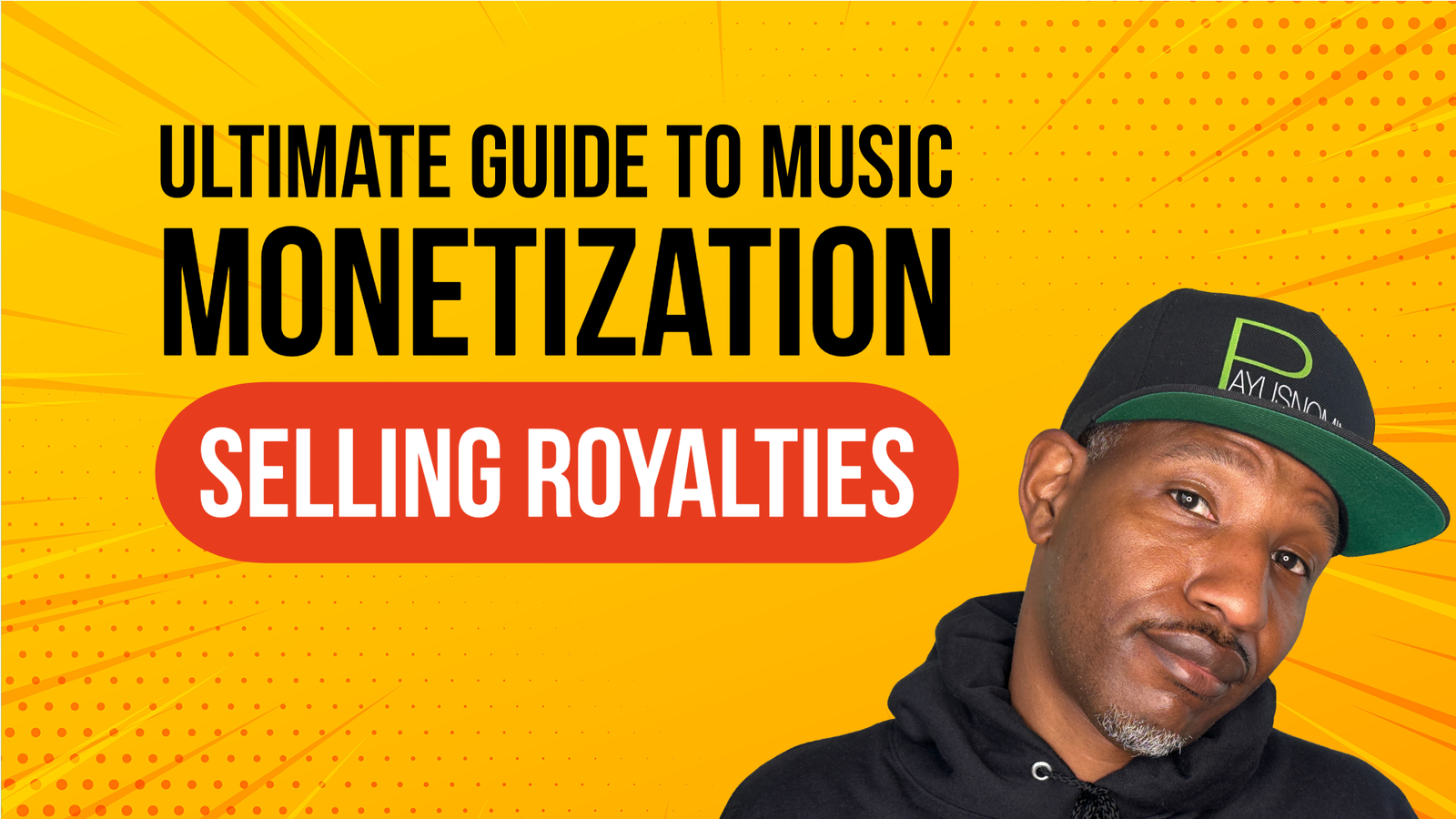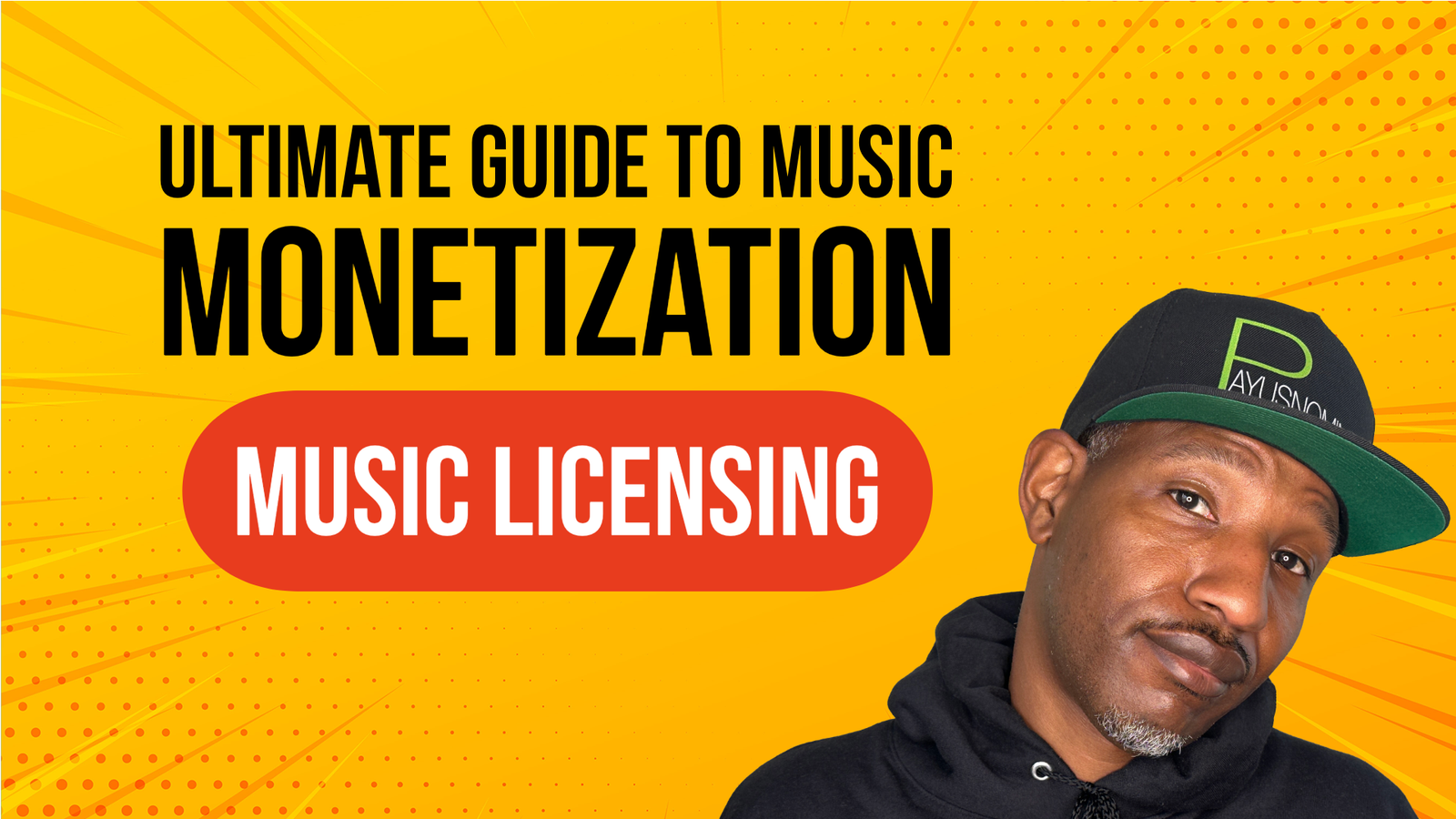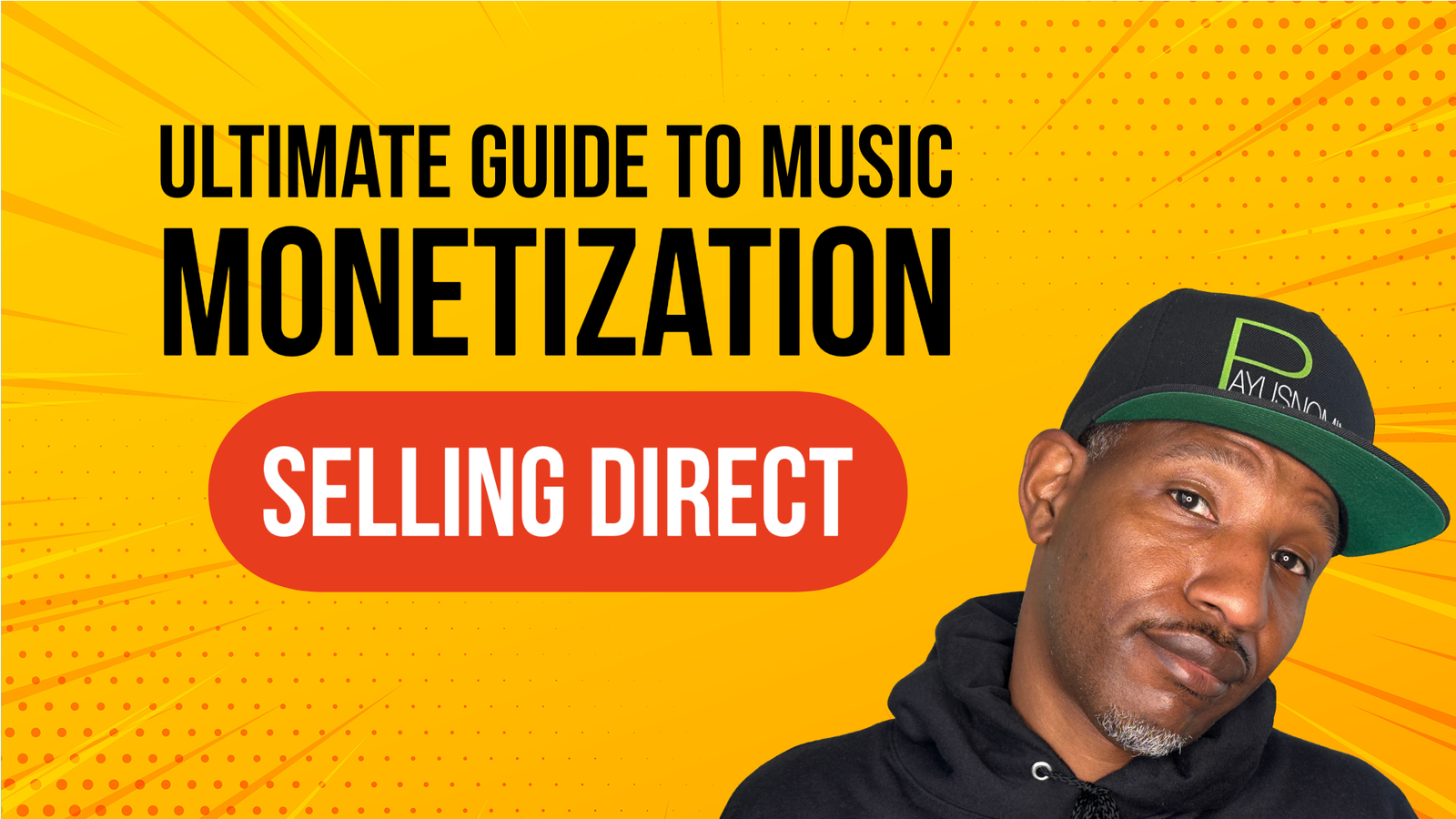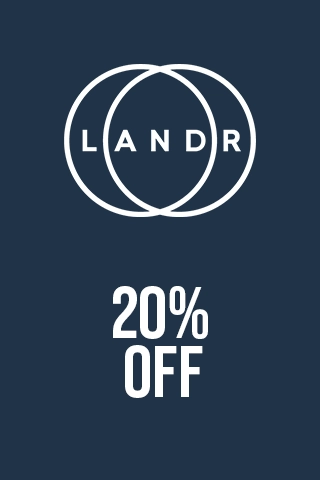Web3 Music Monetization: Ultimate Guide to Music Monetization
Published on Sep 1, 2025

 Why Artists Quit Advertising Too Soon
Why Artists Quit Advertising Too Soon  #L&Light #opticalillusion #mindtricks #Trending #Shorts #IllusionArt #FYP
#L&Light #opticalillusion #mindtricks #Trending #Shorts #IllusionArt #FYP  July 17, 2025
July 17, 2025  Music Monetization: YouTube vs Spotify vs Beehiiv
Music Monetization: YouTube vs Spotify vs Beehiiv  Why I think the system was built for AI to thrive #indieartists #rap #timbaland #AI #AImusic
Why I think the system was built for AI to thrive #indieartists #rap #timbaland #AI #AImusic NFTs: Digital Ownership or Digital Illusion?
What Is an NFT?
NFT stands for non-fungible token. At its core, it's a digital certificate of ownership that lives on a blockchain - a decentralized, public database maintained by computers around the world. Unlike cryptocurrencies (which are fungible, meaning one unit is the same as another), NFTs are unique, and each has a token ID that acts like a registration key.
This token ID tracks:
- Who owns it
- When it was purchased
- How much was paid
- And other transactional metadata
Because blockchains are decentralized, your ownership isn’t stored on a single company’s server (like Apple’s). Even if one computer goes offline, others maintain the record, making blockchain records extremely resilient.
What NFTs Don’t Do
A common misconception is that NFTs enable the transfer of digital files, like songs, videos, or images. But in reality, NFTs don't store files. Instead, they point to files stored elsewhere (usually on a public server), and only the token ID is registered on the blockchain. This means the files are publicly accessible and unprotected.
In other words, buying an NFT doesn’t give you a secure, exclusive copy of a song. It’s like being listed as the owner of a grain of sand on a public beach. Everyone can still walk on it; only your name is in the record book.
Why NFTs Were Hyped for Music
The idea of transferable digital ownership was groundbreaking. In the past, digital files could be copied endlessly. There was no way to "sell" your MP3 to someone else. NFTs promised to create a secondary market for digital music and allow artists to sell limited-edition digital goods with built-in resale royalties.
But as we now understand, the value of an NFT is symbolic and speculative, not functional ownership of the music itself.
The Reality: NFTs as Modern Patronage
Most music NFTs function more like donations than products. Buyers aren’t purchasing the song - they’re paying to be publicly recognized as a supporter. And that’s not worthless! It creates an on-chain history of support that artists can later reward.
For example, artists can grant exclusive access to:
- Early ticket sales
- Front-row seats
- Special merch
- Private shows or unreleased content
These perks can be limited to wallet holders who own a certain number of past NFTs, incentivizing collectors and potentially driving a secondary market. There’s no reason to buy music, consequently, fans need a motive for purchasing. I don’t know how much of a motive it is to be recognized as paying for something everyone else can have for free. That puts all the
weight on utility, but utility works best as surprise rewards rather than what buyers should expect.
Problems With The Utility of NFTs
Even when NFTs offer practical perks - like licensing rights, royalty shares, or memberships - they come with serious complications:
1. Licensing Rights
Some NFTs grant the buyer the right to commercially use the NFT's artwork or associated song. But what happens when the NFT is sold? Does the new owner inherit the license? If someone launches a product line using those rights, do they lose the right to sell their product if they no longer own the NFT?
2. Royalty-Generating NFTs
Some NFTs promise buyers a share of the revenue a song earns. But this creates a financial expectation, and the SEC may consider it a security. Selling these NFTs without registering them as securities can lead to federal prosecution.
3. Membership NFTs
Memberships are meant to generate recurring income, monthly or annually. But NFTs are a one-time purchase, which means creators must front-load all the value. That’s risky: who wants to pay hundreds or thousands of dollars upfront for benefits that may not be sustained?
To address this, some projects offer raffles or lotteries, but when only a few buyers benefit, the rest feel scammed, leading to disillusionment and backlash.
Tracking Support Through NFTs
One practical value of NFTs for musicians is on-chain fan tracking. Every buyer of your NFT - whether it's a song, album, or ticket - is recorded on the blockchain. You can then:
- Reward loyal supporters
- Give perks based on wallet history (e.g., only fans who own 3 albums get front-row seats)
- Spark resale activity in the secondary market
This kind of loyalty-based access can increase fan engagement and drive NFT prices, but it only works if fans believe the access is worth the investment.
Chain Smokers Royalty Share
Chain Smokers is a musical group that rewarded fans who purchased their music directly, meaning from their website, where they had their email addresses, with NFTs. Each NFT represented a share of royalties from their release “The Fall” and was delivered through a platform called Royal.io.
There was no investment and no expectation of profit with the way Chain Smokers distributed royalty shares. It was a reward. During the time when Chain Smokers did this, all NFT marketplaces enforced royalties so collections could be given away and revenue generated from sales on the secondary market. It was quite common for projects to use this tactic.
Royalty Resales: Good in Theory, Weak in Practice
NFTs allow creators to earn a royalty on every resale, often 10% or more. In theory, this means that if your NFT gains value over time, you continue to profit from its success.
But here’s the catch:
- Royalties aren’t enforced on-chain.
- Buyers can transfer NFTs peer-to-peer (outside of marketplaces) to avoid paying royalties.
- Some NFT platforms let users opt out of paying creator royalties altogether.
So, even if resale royalties are promised, they’re often evaded in practice.
Final Thoughts: Hype vs. Value
NFTs offer some novel tools for artists, but they’re often misunderstood, overhyped, and underregulated. The majority of music NFTs are not about true ownership or utility - they’re about signaling support, participating in a trend, or speculating on hype.
That doesn’t make them useless, but it does mean artists and fans should be clear-eyed about what they’re buying and selling.
Value in the NFT space isn’t baked into the tech - it’s determined by the behavior, honesty, and intentions of the people using it.
Social Tokens
Social tokens are coins - fungible tokens - that function as a form of currency. Unlike NFTs, which are non-fungible and unique, these coins are interchangeable, like dollars. They don’t need to have monetary value, but they can still carry utility.
Artists can use social tokens to reward fans. For example, fans who pre-save a song, share a track, or purchase an NFT might receive social tokens in return. These tokens can then be accepted as a form of payment at checkout, giving fans the option to buy music, merch, or event access using the artist’s custom coin.
Social tokens can also become real currency, like Bitcoin, if they’re listed on decentralized exchanges (DEXs). These exchanges are crypto’s equivalent to stock trading platforms like Robinhood, and they allow coins to be backed by stablecoins - digital assets pegged to the dollar, such as USDC. For example, 100 tokens backed by 100 USDC would set the value of each token at $1.
But there’s a catch.
Due to U.S. securities laws, the creator of the coin cannot establish or manage the market. Doing so could classify the token as an “unregistered security,” meaning it would be illegal to sell. The law sees this as a group of people investing in a common enterprise with the expectation of profit driven by a third party (the creator) - called the Howey Test, which could classify it as a security.
To stay compliant, the artist can’t be the one propping up the coin. However, they can incentivize others to create the market through a process called Staking.
Staking is similar to earning interest on money parked in a savings account. The artist might say to their fans: “If you provide liquidity - meaning you back my coin with USDC on a decentralized exchange - you can also stake
more tokens on our staking platform and earn interest.” They might offer high yields, like 10% or 20% annually, to encourage participation.
In this system, a $10 album purchase using the artist’s coin could theoretically become worth $100 if demand spikes. But if demand drops, that same coin could be worth only $1 the next day. The value is driven by speculation and market participation.
Now, while all of this sounds promising in theory, there’s significant friction in practice.
Using NFTs or Social Tokens means engaging with complex crypto systems - liquidity pools, staking platforms, token creation, and “Tokenomics.” It’s not just artists who need to figure this out - fans have to climb the same learning curve.
To participate, fans must:
- Download Web3 wallets
- Learn how to use decentralized exchanges
- Pay gas fees (transaction fees), especially when using popular blockchains like Ethereum
- Possibly use sidechains like Polygon or Arbitrum to reduce costs, or switch to entirely different chains like Solana, which might require token swaps or conversions
All of this introduces technical and psychological barriers that make mass adoption difficult.
Platforms You Can Use
One of the best platforms to use for Social Token creation is Fun.tryroll.com because it comes with infrastructure. Artists can sell their coin straight out of the gate, and holders can trade immediately. Once the token has sold at least 80% of its supply, it’s put on a decentralized exchange. There’s also Pump.fun, but that service leaves you on your own outside of the creation of the token.
RAC Social Token
The recording artist RAC rewarded collectors of his NFTs with allotments of his social token $RAC. Initially, the coin could only be used for things like exclusive drops, access to a private Discord channel, and things like that. Eventually, it was placed on a DEX, and holders were able to trade it for other cryptocurrencies like Ethereum and USDC.
Once again, we see the removal of an investment and expectation of profit through the use of rewarding past activity. What this does is incentivize future activity and drive secondary sales.
Takeaway
Big things often start small.
While most fans may never adopt this technology, a few will. And if enough value is created within those early communities - access to exclusive content, early tickets, private groups, or financial upside - more fans will start pushing through the friction to gain access to that value.
The issue is that NFTs and Social Tokens have a poor reputation due to an epidemic of scams. Artists risk the reputation of their brand by attempting to launch coins and sell NFTs. It’s hard to promote something if you’re low-key ashamed to tell people about it. For established acts, it’s worth the risk; the platforms often pay them upfront, where the launch of their coin or NFT project is essentially one big influencer campaign. When you’re dependent on the actual product being successful without wash trading or pumping and dumping, things become exponentially more challenging.




